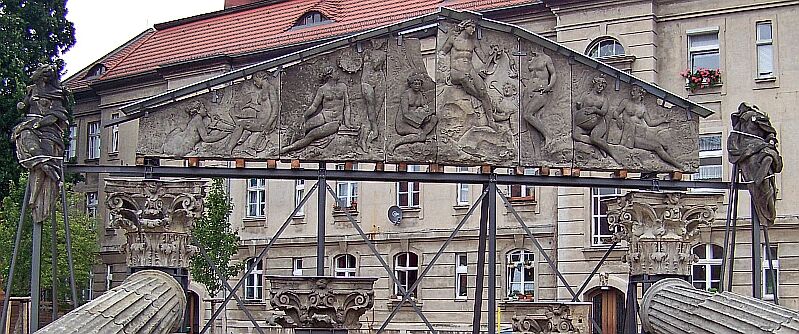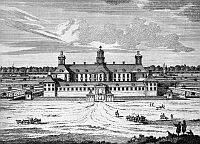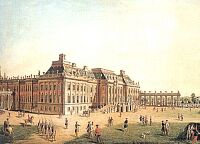


| Welcome, fellow waymarker! |
 
|
We love waymarking and have so far submitted more than 500 waymarks. We also like to incorporate pictures and
links into our waymarks to pass on as much information as possible. Unfortunately, Groundspeak is currently
experiencing some problems with html encoded waymarks, resulting occasionally in a total code-garble.
|
| Until the problem is fixed, we will submit only basic waymarks and use our personal webspace to share the fully fledged version with our fellow waymarkers and geocachers. |

|
|
Preserved Architectural Remnants and Ruins | City Palace, Potsdam, Germany |

 |

| Since 1751, the Potsdam City Palace was the official winter residence of the Prussian Kings, and, starting in 1871, the German Emperors (Kaiser), making it Potsdam's oldest castle. Unfortunately, there is not much left of it. |

 City Palace in 1691
City Palace in 1691
|
 The Palace in 1751
The Palace in 1751
Louise Portal and Inner Court,
|
The location has been the site of several fortresses and castles since the times of the Roman Empire.
Slavonic tribes that lived in the area until the mid of the
12th century built a fortress here in 993 to guard a nearby river passage. In 1157, the Ascanians conquered the area and enhanced the fortress. But at the end of the Middle Ages, the fortress decayed until it finally was torn down. It was rebuilt in 1589 but wasn't used much and for a while in the early 17th century, it was even turned into a barn.
Prussia, and especially Potsdam was considered to be the cradle of German Militarism. Dismantling a place that in a sense was the starting point of two World Wars was supposed to send a signal to the world that post-war Germany had honestly broken with its past. But no matter how we look at it, the crown jewel of Frederician Rococo is lost. Currently, the only remaining original parts are the royal stables, now hosting the Film Museum and one single sculpture group in the former Pleasure Garden.
|


  |
Retun to the Waymark
or check out our homepage! |
  |